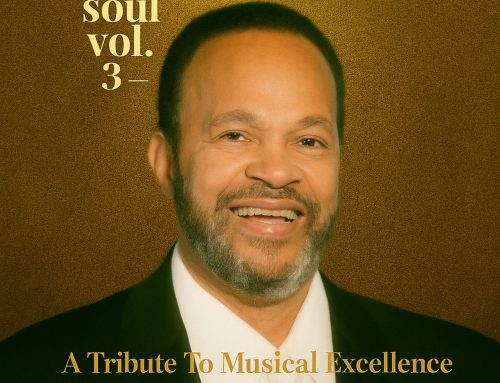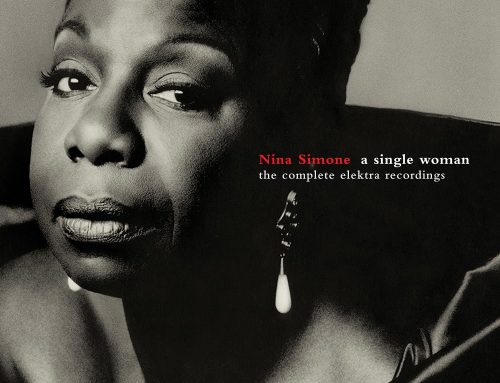“I loved it when it was me, Mary and Cindy. And I think we could have done great things if we had just been left alone. Being able to carry on and do like we wanted to do,” so sayeth Scherrie Payne, the little lady with the big voice. “Speaking truthfully, I think the problem was Pedro Ferrer, Mary’s husband. In fact, I know that was the problem. If he had just stayed out of it, we could have really carried on…and done some wonderful things. Even in spite of Motown. We could have forced them into generating more interest.” And in tribute to this statement, I thought it might be fitting to remember this line-up now, with quotes from the three ladies sourced from my chats and a variety of places which I’ve credited at the end of this Spotlight.
Another thing that got me thinking happened just recently via Steve Weaver on Facebook when he recalled visiting my apartment in north London with Cindy, and he posted a couple of photos from that occasion. Joining them were our friends Paul Delapenha and Steven Teerce. His mention of this brought back further memories although I can’t bring up the date except to say it was during the eighties. (One of these days I’ll dig out my diaries, which I’ll have to do sometime anyway if I’m to write the dreaded memoir).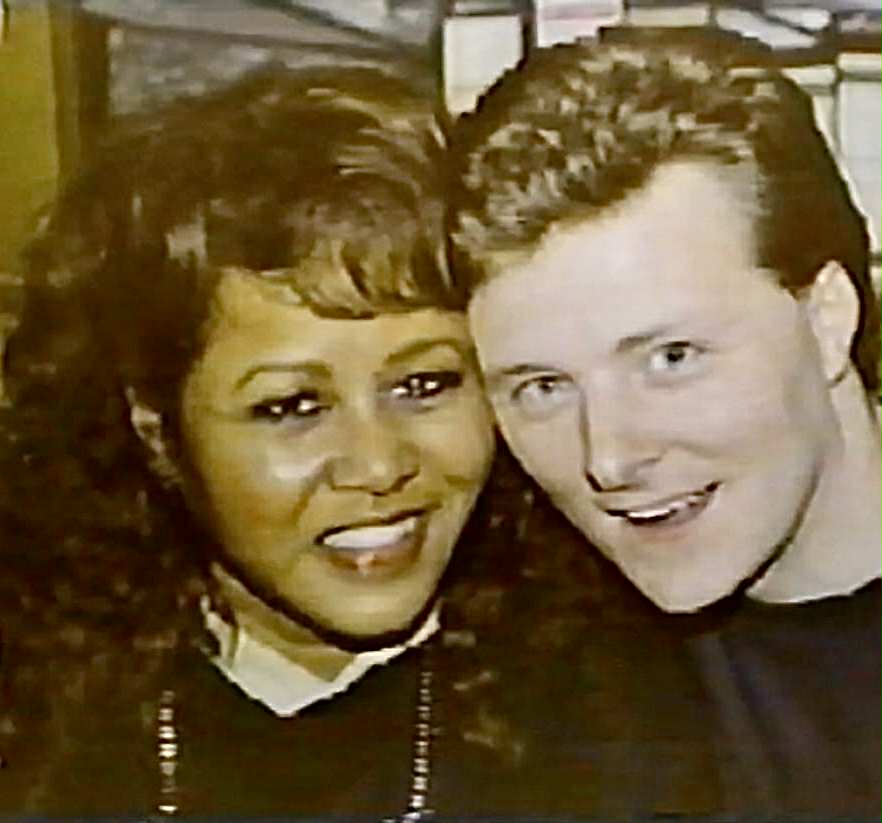
I totally agree with Steve’s comment in his post, “that considering Cindy’s showbiz CV she is the most down to earth, unassuming and lovely lady.” We went on to enjoy a Chinese meal and I believe headed off to the Soho nightclub, Le Beat Route in Greek Street, where I had my photo taken sitting between Cindy and UK singer (and my soul sister) Dotty Green. The ‘new’ Supremes? I think not!
Back to the plot. Scherrie continued, “It was right after I got into the group, and we were rehearsing every day at Mary’s house that Diana just happened to stop by. Mary said, ‘Oh, that’s odd, she never comes over to my house. It’s because there’s a new singer, and she wants to see who you are.’ (Diana) was always nice to me. Regardless of what other people say, and whether it be true or not….she was always nice to me.” And in the notes for “Let Yourself Go: The ’70s Albums, Vol 2: 1974-1977:The Final Sessions”, she added, “Mary and Cindy left me alone in the living room with Diana and we made small talk. I was nervously trying to think of things to say. She had been out of the group for quite a while but I could tell she still cared.”
As an aside, let’s backtrack for a minute. Thirteen-year-old Scherrie was aware of Berry Gordy and Motown thanks to her sister Freda, who had recorded “Father Dear” and “Save Me A Star”, two of four songs Berry co-wrote for her. “Then Berry and my mother clashed over the contract, so that never was consummated….He didn’t even have Mary Wells then, so Freda would have been his first female singer.” Much later on, Scherrie came to the attention of Motown via her boyfriend Lamont Dozier, who was in Los Angeles on business, but had taken time out to party with Mary Wilson. She told him Jean Terrell was leaving The Supremes and they were looking for a new lead singer. Lamont suggested his girlfriend. Things happened quickly, and before she knew it, Scherrie was on a flight to California. Cindy Birdsong collected her from the airport and drove straight to Mary’s house in the hills above the Sunset Strip. Rehearsals began almost immediately because the trio had a booking pending at the Arizona State Fair. “I had to learn all that material, steps and everything. We worked tirelessly into the wee hours of the morning every night. Mary said, ‘If you can do this gig, you can have the position.'”
Mary was also quoted in the afore-mentioned CD notes that there were just the two of them at Scherrie’s so-called audition. “She was very pretty and also very sweet – and I liked that. But she was also very petite. My mind immediately went to the gowns (Scherrie is 5′ 2″ tall). I didn’t let that stop me from hiring her, because she was such a great singer and that was important for the group, and for the image of The Supremes. I didn’t look for anyone after her.” Before her teenage dream became a reality, Scherrie, also from Detroit, admitted she had watched the trio develop: “I loved The Supremes. I was very proud of them. They were very classy and that’s what I loved.”
Cindy had joined the group during 1967. Her arrival marked the departure of her friend, and founder member, Florence Ballard. It was a bittersweet occasion for Cindy who felt guilty about stepping into her friend’s warm shoes. And they were big shoes to fill too. But Motown was Motown, and business was business, and had nothing to do with the girls’ friendship. Sadly, it’s now general knowledge that Florence had no fight left in her; she’d been beaten down by Motown demons who, instead of offering a helping hand, condemned her to an uncertain future. However, it wasn’t Cindy’s voice so much that won her the Supreme badge, but rather her facial resemblance to Florence. She also had a seasoned sense of maturity and poise being four years older than Florence, and five years older than Mary and Diana. The group needed that.
It seems the Supreme-in-waiting had already been fitted out in the same gowns that Florence wore, and regularly sat in the wings watching the trio perform on stage. Berry Gordy naively believed nobody was aware of this, but he hadn’t taken into account the closeness of some of the audiences to the singers, so the secret soon escaped into the public arena.
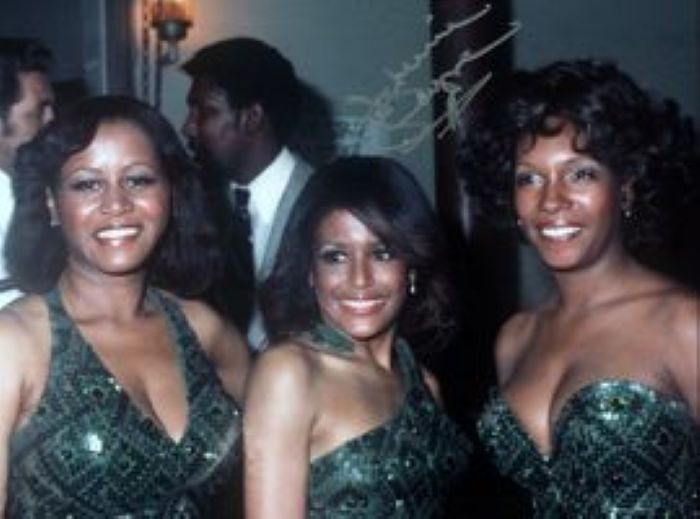 Cindy said she remembered her first official appearance at the Hollywood Bowl. “It was before thousands of people, and after learning the whole show in one and a half days, around the clock with Mary as my teacher, I went on stage with shaky knees and a happy heart. I was so excited. After that engagement I went to my first Hollywood party… I was in awe that night as I met and talked to Shirley MacLaine, Natalie Wood, Robert Wagner, Henry Fonda, and so many others. That was on a Saturday night, then early on Sunday morning there was a phone call and the owner of a posh shop in Beverly Hills on the well-known Rodeo Drive opened up his shop just for us to have a shopping spree. What fun that was.”
Cindy said she remembered her first official appearance at the Hollywood Bowl. “It was before thousands of people, and after learning the whole show in one and a half days, around the clock with Mary as my teacher, I went on stage with shaky knees and a happy heart. I was so excited. After that engagement I went to my first Hollywood party… I was in awe that night as I met and talked to Shirley MacLaine, Natalie Wood, Robert Wagner, Henry Fonda, and so many others. That was on a Saturday night, then early on Sunday morning there was a phone call and the owner of a posh shop in Beverly Hills on the well-known Rodeo Drive opened up his shop just for us to have a shopping spree. What fun that was.”
She continued, “I have many fond memories of those days, when it seemed we had the world in our hands, but one of the most exciting was performing before and meeting the Royal Family in England. I remember standing next to Princess Margaret at a cocktail party afterwards, and her telling me how beautiful my gown was. I also recall how nervous Princess Anne was upon meeting us, as she told us she had all our records, and how much she loved us. At other times I just basked in the adoration of it all as I met other royal families and show-biz elite, but I also wanted to meet The Beatles, Elvis, Warren Beatty, and my favourite, Johnny Mathis.”
 Looking back over her career as a Supreme was always with fondness and love, Cindy said: “It was a fairy tale, a dream come true, but most of all I am grateful for the friendships I’ve made, for many of them are lasting…..And for those who have had the pleasure of meeting Scherrie will know that no matter how brief they are, they will be remembered. She’s a genuine sweetheart and I love her dearly. I love Diana and Mary. They taught me so much, and we shared many gold moments together that I will always cherish.”
Looking back over her career as a Supreme was always with fondness and love, Cindy said: “It was a fairy tale, a dream come true, but most of all I am grateful for the friendships I’ve made, for many of them are lasting…..And for those who have had the pleasure of meeting Scherrie will know that no matter how brief they are, they will be remembered. She’s a genuine sweetheart and I love her dearly. I love Diana and Mary. They taught me so much, and we shared many gold moments together that I will always cherish.”
Having left The Supremes in 1972 to raise her son Charles, aka David, from her marriage to Charles Hewlett in August 1970, Mary later asked Cindy to return to the group to replace a pregnant Lynda Laurence in 1973. “I agreed to do it, even though my son was a toddler….I think the newness of motherhood had worn off and the walls were starting to close in on me. I had to leave him at home so his father and our housekeeper raised our son. When you have to leave your husband for ten months of the year, with a day off here and there, it was asking for trouble. Eventually we got divorced when my son was two years old.”
Now with the line-up complete, The Supremes couldn’t record, only perform, because they were tangled up in a legal action which prevented them doing so. Mary had applied for the trademark of the name ‘Supremes’ and wouldn’t sign any contract with Motown until this was sorted out. In return, Motown wouldn’t let them into a studio until they did sign. So, for a year, Mary, Scherrie and Cindy planned their future; developed a new act which they rehearsed until they dropped, chose new stage outfits, toured and appeared on the occasional TV show. As far as the public was concerned, their career carried on as normal, while fans knew better and longed for new material.
Then in 1974, the ladies recorded a version of Betty Everett’s classic “The Shoop Shoop Song (It’s In His Kiss)”, produced by Michael Lloyd for Mike Curb Productions. A second song was also finished during this session. Titled “It’s All Been Said Before,” it was actually earmarked for The Supremes’ first single. While they liked the song, Cindy admitted at the time, “I don’t think it had enough punch to be a single. Not compared to what was happening on the radio at the time.” However, this taste of recording again, whetted their appetite for more, and with the help of Clayton Ivey and Terry Woodford, from the Muscle Shoals Rhythm Section, who had opened their own Wishbone Inc, and who had struck a deal with Motown, The Supremes were soon back in business.
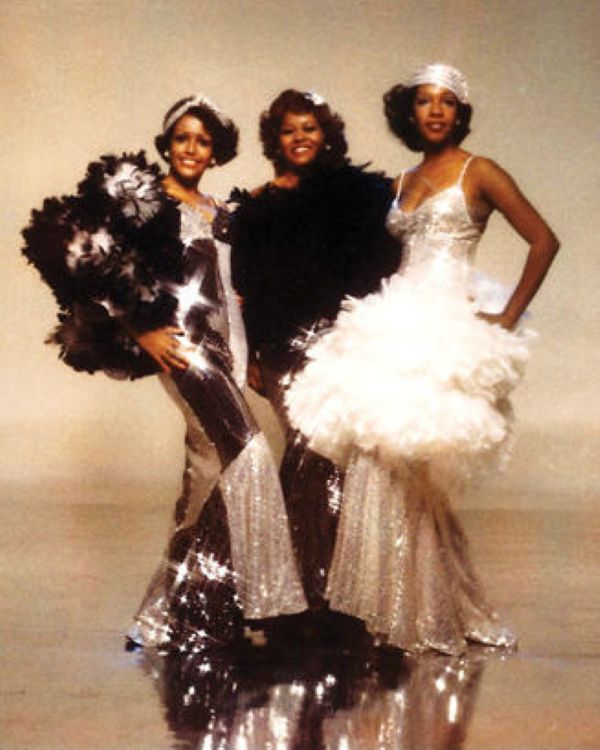 The result was “The Supremes” album in May 1975, the first to feature Scherrie. Mary was pregnant with her daughter Turkessa, and for the keen of eye, during the album cover shoot she was strategically covered by Scherrie and Cindy lounging against a chair in front of her, with their elbows hiding her bump, on which sat a spray of roses. For the back cover, Mary was once again discreetly hidden by the others.
The result was “The Supremes” album in May 1975, the first to feature Scherrie. Mary was pregnant with her daughter Turkessa, and for the keen of eye, during the album cover shoot she was strategically covered by Scherrie and Cindy lounging against a chair in front of her, with their elbows hiding her bump, on which sat a spray of roses. For the back cover, Mary was once again discreetly hidden by the others.
“He’s My Man” with Scherrie and Mary on lead, was the first single, and prompted the reviewer for Cashbox magazine to glow, “The Supremes don’t give you one second of doubt on what maybe the hottest R&B, disco, top forty crossover records to emerge from the Motown camp in recent months.” And how I agreed: the pulsating beat put sparkle into this gem of a single. So much so, I’m still playing it on my Radio Illumini Hitsville show, and certainly make no excuses for doing so.
With Scherrie taking the main mic, another slice of disco followed courtesy of Brian and Eddie Holland,”Where Do I Go From Here”; with “Early Morning Love”, their third and final extracted single. This time Mary was lead vocalist. Other worthy tracks included “Color My World Blue”, “You Turn Me Around” and “It’s All Been Said Before”. The production team that featured Brian Holland, Hal Davis, Greg Wright, and of course Terry and Clayton, among others, ensured “The Supremes” was a sweet jar of different flavours, probably indicating nobody really knew what market to aim for, while maintaining as high a standard as possible while they decided.
With disco creating such a huge impact in the world, it seemed logical to include a few tracks to test that market. Indeed, many nightclub DJs were programming their music, which certainly helped boost the promotion the ladies were involved with – from media interviews, television music and talk shows, radio guest spots, Mary, Scherrie and Cindy were everywhere, and, unlike previous line-ups, they each had a public voice.
As always with Motown sessions, there were several unused finished tracks squirrelled away. “The Sha-La Bandit” was one, and finally released on “The Supremes At Their Best” in 1978, while another, “Bend A Little” wasn’t issued until 2002 on the 2-CD release “The 70’s Anthology”. Hal Davis had produced four tracks for “The Supremes” album but only one made it, namely “This Is Why I Believe In You”. The others – “Mr Boogie”, “Dance Fever” and “Seed Of Love” – turned up on the “Let Yourself Go” 3-CD package. The album had reunited Brian and Eddie Holland, either as producer or composer, and they were also responsible for a third track, “I Can Never Recover”, which was overlooked at the time, but which also turned up on the 2-CD release. The chemistry between The Supremes and the Holland brothers was electrifying, almost a return to the heyday of the sixties, and it was this that encouraged Brian to take over the production of their next album, “High Energy.”
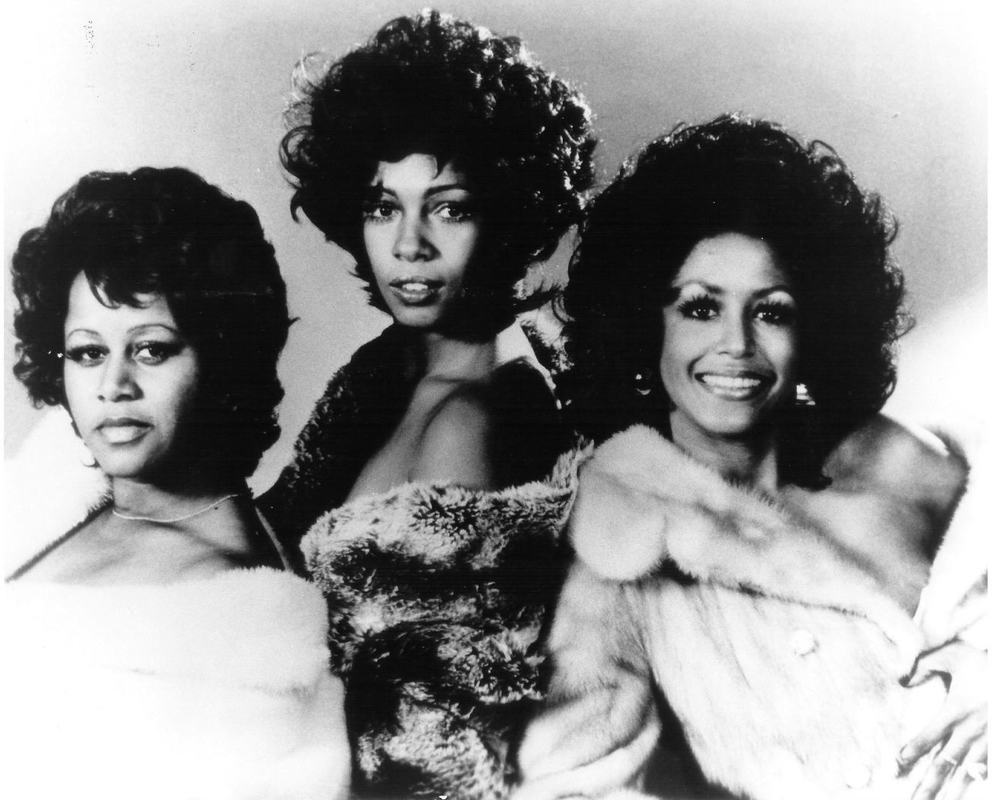 Released in April 1976, and produced by the Holland brothers, Mary, Scherrie and Cindy completed all the tracks, but before “High Energy” could be released, the group’s membership changed. “I was burned out,” admitted Cindy. “My marriage was coming to an end. Being a Supreme didn’t mean the same to me anymore.” She had also squared up to Pedro Ferrer because she felt she was being badly treated, and who, she knew, wanted to replace her with Thelma Houston. Mary Wilson. however, saw the situation differently as she wrote in Supreme Faith: “Cindy couldn’t seem to lose the weight she’d gained, and on stage she appeared to be just going through the motions, occasionally flubbing cues. I kept encouraging her to change for her own good. Cindy took any comment I made defensively….(She) felt we were ganging up on her… We had put off the decision to ask (her) to leave long enough.”
Released in April 1976, and produced by the Holland brothers, Mary, Scherrie and Cindy completed all the tracks, but before “High Energy” could be released, the group’s membership changed. “I was burned out,” admitted Cindy. “My marriage was coming to an end. Being a Supreme didn’t mean the same to me anymore.” She had also squared up to Pedro Ferrer because she felt she was being badly treated, and who, she knew, wanted to replace her with Thelma Houston. Mary Wilson. however, saw the situation differently as she wrote in Supreme Faith: “Cindy couldn’t seem to lose the weight she’d gained, and on stage she appeared to be just going through the motions, occasionally flubbing cues. I kept encouraging her to change for her own good. Cindy took any comment I made defensively….(She) felt we were ganging up on her… We had put off the decision to ask (her) to leave long enough.”
I prefer to write that Cindy left (and not that she was fired) in 1976, that same year Florence Ballard, The Supreme she had originally replaced, died at the age of thirty-two. She also signed away her future royalties for a lump sum as she was having financial difficulties at the time, a move she obviously later regretted. Ex-Raelette and Wonderlove member, and an established composer, Susaye Greene, was approached, and following a meeting between her and Pedro, she recalled “He basically said ‘Cindy’s coming off the tour and Bob Jones (Motown executive) says you’re the girl for the job.’ So next day I went to meet Mary.”
Susaye Greene was the new Supreme, and stepped into Cindy’s shoes and gowns, after some alterations. She recorded lead vocals on a couple of tracks, namely, “High Energy” and “I’m Gonna Let My Heart Do The Walking”, which was probably the first single since “Your Heart Belongs To Me” to feature four Supremes. Incidentally, the song was adopted by the American Heart Association to launch a promotional campaign urging the public to “let your body do more walking for your heart’s sake.” This was also their final US top forty hit before they disbanded in 1977. Scherrie’s original lead on the single was released with portions of Susaye’s vocal ad-libs.
The album’s title song, the second single in April 1976, featured Susaye on lead vocals. “Susaye was an excellent vocalist,” confirmed Mary. “When she put her lead vocals on ‘High Energy,’ she just lifted that thing all the way up.” If I had to choose, other credible tracks included “I Don’t Want To Lose You”, “You’re What’s Missing In My Life” and “Don’t Let My Teardrops Bother You”.
The album offered pathetic artwork on the front cover depicting an unrecognisable female trio, while the back included Susaye in the graphics, but not Cindy. As you know, this situation was similar to that four years earlier when Cindy had recorded the entire “Floy Joy” album but Lynda Laurence, her replacement, was featured on the cover. Then, delving back even further, Cindy appeared on the cover of the 1968 “Reflections” album, despite Florence having recorded some of the tracks. Apparently, the original album sleeve showed both ladies but that artwork was withdrawn at the eleventh hour: that clearly set the precedent for future membership changes.
Happily, “High Energy” was widely accepted, fans and critics were delighted, with the reviewer for Record World leading the way: “”High Energy’ is their glossiest and most satisfying album in some time. Like The Temptations, The Supremes are usually referred to as an ‘institution,’ a euphemism for a group that has gone through multiple personnel changes. But the myth, the spirit and Mary Wilson remain, and all feel a lot fresher under the direction of Brian Holland, who produced, and Eddie Holland, executive producer; it’s almost like old times again.”
The last word needs to go to Mary Wilson, the woman who fought tooth and nail, against great personal odds, to keep The Supremes alive: “When it came to Scherrie, Cindy and myself, there were no huge egos. It was perhaps the nicest group.”
Sharon Davis
Acknowledgements: Women Of Motown: An Oral History – Susan Whitall;
The Supremes: A Special Commemorative Booklet – June 17 1964 – June 17 1984 compiled by Carl Feuerbacher, The Supremes’ Mary Wilson Fan Club;
Notes from “The Supremes – Let Yourself Go. The ’70s Albums, Vol 2: 1974-1977. The Final Sessions”; Supreme Faith – Mary Wilson. And all pictures are either from my personal collection or formersupremes.com. The picture of Cindy Birdsong with Steve Weaver is his copyright, and he has my heartfelt thanks!
Let Yourself Go: The ’70s Albums, Volume 2 1974-1977 The Final Sessions
The Supremes: The ’70s Anthology


